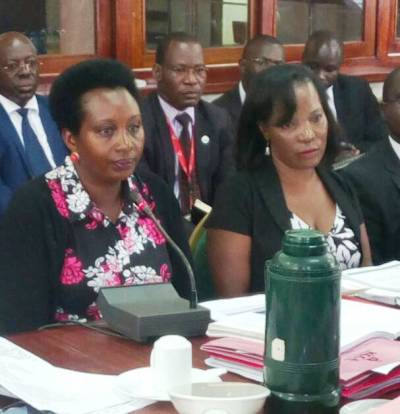Factories taking shape at one of the new Industrial Parks
Agro-industrialization is set to take the fifth largest share of the national budget for 2022/23 as the government implements the Agro-Industrialization Programme Implementation Action Plan.
This is also part of the third National Development Plan (NDPIII), whose theme ‘is increasing personal incomes and improving the quality of life of Ugandans.’
According to the government plan for the next financial year, Agro-industrialization alone is due to get 1.5 trillion shillings, which is almost 6 percent of the total resource allocations to programs worth 26 trillion shillings. Including projects to be externally funded, the planned expenditure amount to 1.8 trillion Shillings.
Almost half of the program allocations will go to programs under human capital development programs in sectors like education and health which will take 6.57 trillion shillings, as governance and security take programs to take 6.4.
In third place in integrated transport infrastructure and services with 4.5 trillion shillings.
On top of the planned allocation to agro-industry, the agriculture sector will also benefit from the planned government flagship Parish Development Model, which will cater largely primary production.
Pillar 1 of the model (Production, Storage, Processing, and Marketing) is also prioritized under the Agricultural Value Chain Development Strategy 2021-2026 recently approved by the cabinet.
“Consequently, next financial year, the focus will be on sustaining the resilience of agriculture along the value chain, agro-processing, and support to light manufacturing,” says the National Budget Framework Paper, 2022/23.
Primary production, which is mainly farming, features 39 percent of the households in subsistence agriculture, and the funding programs are aimed at reducing this.
The strategy and the parish model will focus on high-value commodities like coffee, dairy, poultry and poultry products, fish, and citrus, among others.
The government also targets to expand storage and processing capacity for agricultural commodities from 550,000 to 1.25 million metric tons, as part of the efforts to tame post-handling losses and quality deterioration.
The Ministry of Finance, Planning, and Economic Development also plan to continue capitalizing the Uganda Development Bank to enable it to offer more affordable long-term credit to agriculture, agro-processing, and manufacturing.
The Strategy which states what to do at each value chain level proposes the relevant approaches to adopt and defines the roles of various actors in the NDP III and the parish model framework, for easy coordination and avoidance of duplication.
“This strategy brings all the players together at various levels; production and productivity level, postharvest handling and primary processing level, secondary and tertiary processing level and supporting standards that lead to increased competitiveness of Uganda’s products in the global markets,” says Gen. David Kasura Kyomukama, the Permanent Secretary at the Ministry of Agriculture, Animal Industry and Fisheries.
Agriculture contributes a quarter of the country’s GDP but employs more than two-thirds of the population. The sector accounts for 44 percent of the country’s exports, showing the potential it has to lead economic transformation.
The export earnings are still limited by the fact that most of the exports are raw materials, and some with very little value addition.
The earnings are planned to rise to 2.3 billion dollars by the end of the next financial year, compared to 1.65 billion in 2018, while the anticipated increase in output and value addition should lead to a decline in agricultural imports from 931 to 672 million dollars.
“Agricultural will propel Uganda to reduce its negative trade balance, through adding value to agricultural raw materials in order to promote the export expansion of high-value products, while promoting import substitution of agro-industrial products,” says General Komukama.
Specialized agricultural institutions given direct allocations include the Dairy Development Authority, with 11.5 billion shillings, the National Animal Genetic Resource Centre and Data Bank with 71.7 billion, and the National Agriculture Research Institute, NARO which gets 108 billion.
The Cotton Development Organization is allocated 8 billion, while the Uganda Coffee Development Authority gets 85.6 billion shillings.
-URN





